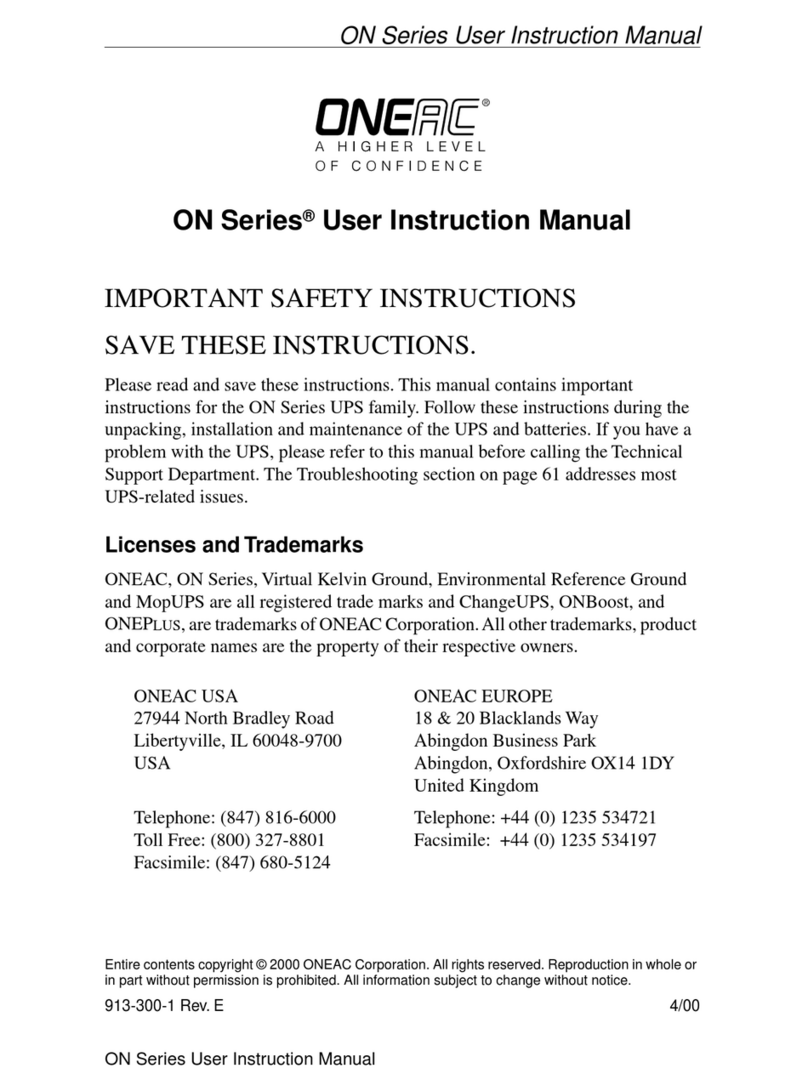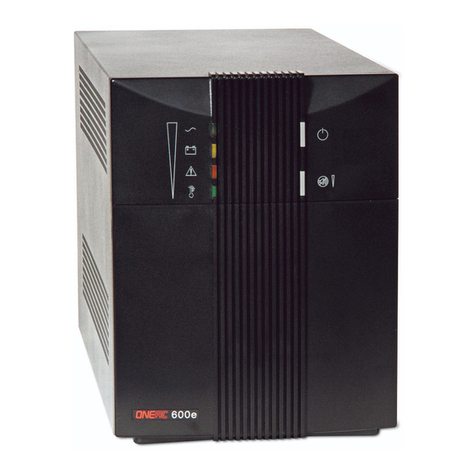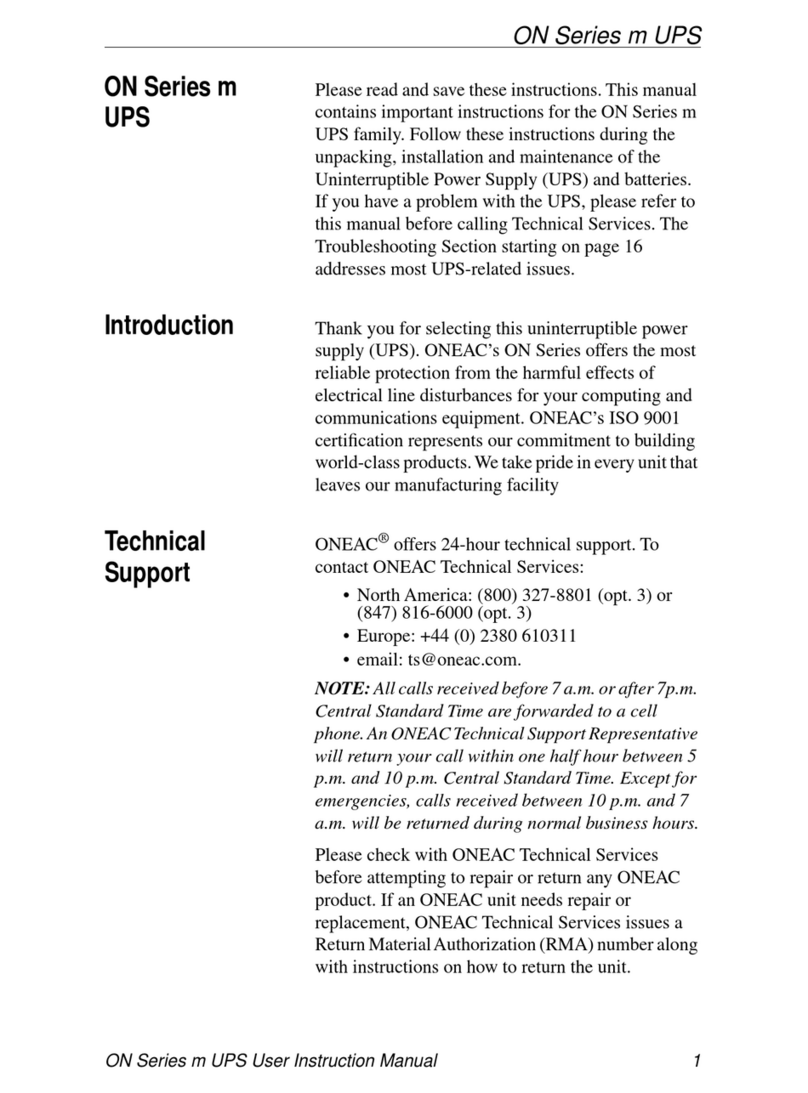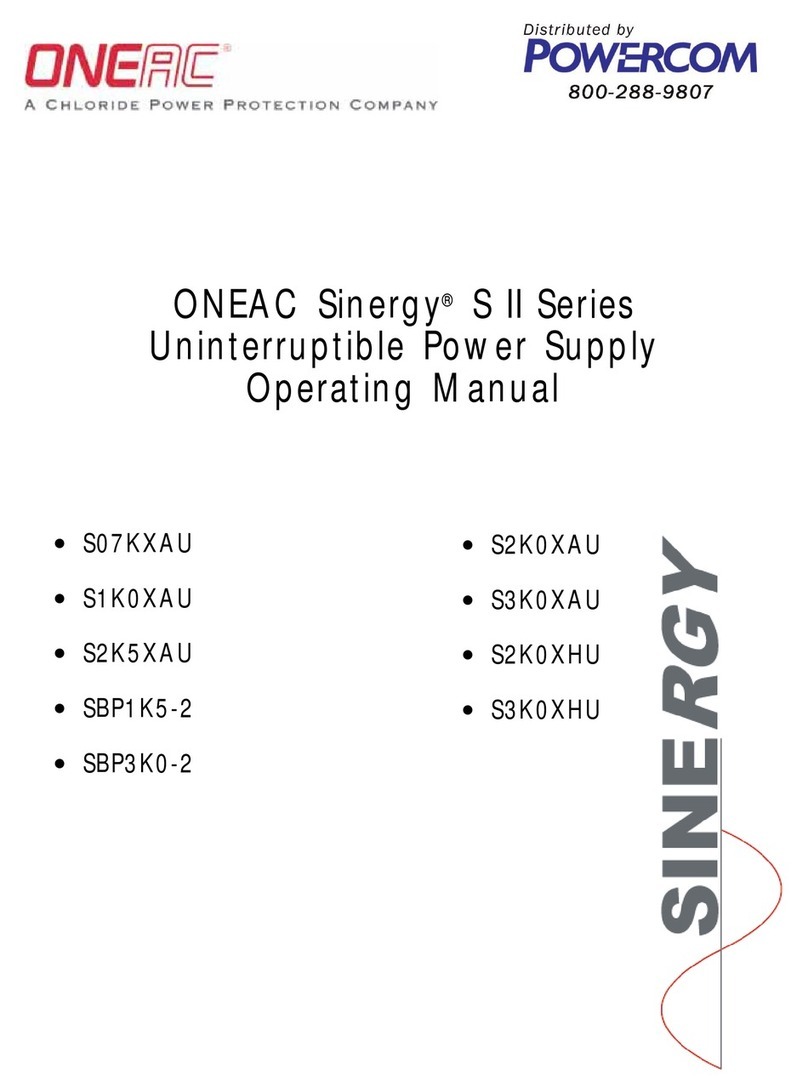
2 ONEAC Sinergy UPS User Manual
This device complies with the relevant safety regulations for uninterruptible power supplies for use in a
controlled office environment. If you have any questions, please contact ONEAC Technical Service at
1- 800-327-8801 Opt. 3 or 1-847-816-6000, Opt. 3.
• Transport the unit only in suitable packaging (protect against jolts and shocks).
• If the equipment is moved indoors from a cold environment, condensation may occur. Before you place
the equipment in service it must be absolutely dry. An acclimatization period of at least two hours is
required.
• This equipment must be installed in an indoor, temperature controlled environment that is free of
conductive contaminants. See chapter 10, “Specifications” on page 30 for specific environmental
limits.
• This equipment has a safety-tested power cable and may only be connected to a properly grounded
receptacle. The special conditions for installing the hard-wired devices SE61, SE101 and SE203 in
chapter 4, “Installation and Commissioning” on page 13 must be observed.
• The switch (see chapter 2, “Display and Operation Elements” on page 3) does not isolate the
device (UPS) from the mains. To isolate completely from the mains, the main switch must be switched
off and the power plug disconnected.
CAUTION:
Removing mains power may not remove power from the device (UPS) output. See instructions above to
properly remove power from output.
• In case of interruption of the mains voltage, the integrated battery maintains the power supply to the
connected equipment.
• Lay all cables so that nobody can stand on them or trip over them. When connecting the device to the
power supply, follow the instructions in the chapter on “Installation and Commissioning” on page 13.
• No data transmission lines should be connected or disconnected during a thunderstorm.
• Make sure that no objects (e.g. pins, necklaces, paper clips, etc.) get inside the device.
• In emergencies (e.g. damaged case, controls or power cables, penetration of liquids or foreign matter)
put the device into BYPASS, disconnect the power plug and contact ONEAC Technical Services at
1-800-327-8801 Opt. 3 or 1-847-816-6000. The special conditions for installing the hardwired devices,
SE61, SE101 and SE203 are in chapter 4, “Installation and Commissioning” on page 13.
• Do not connect equipment that will overload the UPS (e.g. laser printers or vacuum cleaners) or
demand DC-current (e.g. half-wave rectifiers or hair dryers).
• When cleaning the unit, follow the instructions in chapter 7, “Maintenance” on page 27.
• The sum of the leakage currents (protective conductor current) of the UPS and the connected devices
must not exceed 3.5 mA for the types S700, S1000, S2000 and S3000.
ONEAC Sinergy UPSs are UL listed under UL1778 for North American units.
1.4 Warning for SE61, SE101 and SE203
This product may only be sold to users with qualified personnel. In order to avoid RF, restrictions for
installation or additional precautions may apply.




































